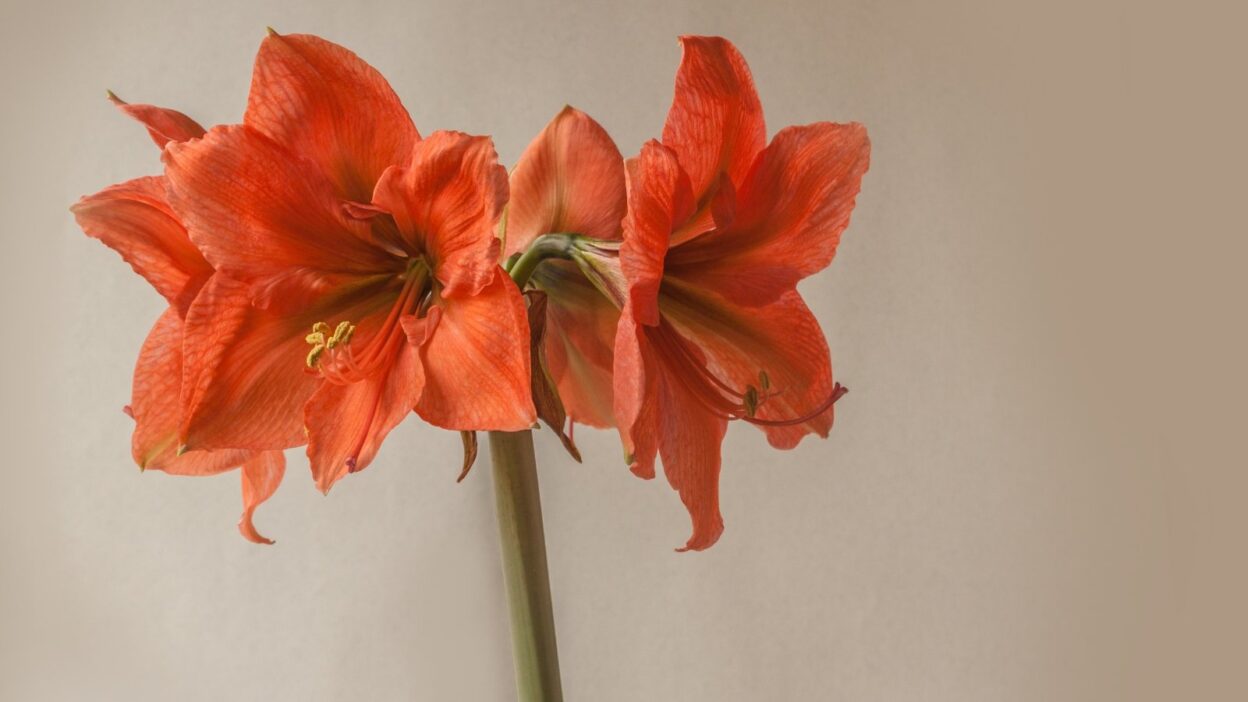Amaryllises are stunning tropical flowering plants that typically bloom in early spring. They are native to warm climates in areas of South and Central America, Mexico, and the Caribbean. While you may have a difficult time keeping amaryllis alive outdoors if you are north of Zone 8, they are easy to force blooms indoors and make a beautiful holiday decoration.
I live in a climate where these come back every year, and I love to get a new one each winter and plant it with the others in a special part of the garden. They make wonderful cut flowers and last a long time in a vase. If you cut them in the bud, they will continue to open, revealing their full glory.
Learning to force amaryllis bulbs to bloom indoors is easy, and in most cases, foolproof. However, there are some things you can do to maximize your plant’s life and blooming power. Here are some steps you can follow to get your bulbs blooming big time this winter.
Select a Variety
This is my favorite part of planting any flower. It’s also the hardest because how can I be expected to narrow the options down to just one? Some varieties may be more difficult to locate than others, but many nurseries carry a nice selection. If this is not available to you, you can order a wide range of bulbs online.
Here are some of my favorite amaryllis varieties for forcing indoor blooms:
‘Naranja’
This is the variety I chose for myself this year. ‘Naranja’ lives up to its name with large, full, reddish-orange blooms. The sturdy stems hold a large, heavy flower cluster that is certain to brighten up the home on the coldest winter day. The velvety petals are broad and slightly pointed at the tips.
‘Sweet Lilian’
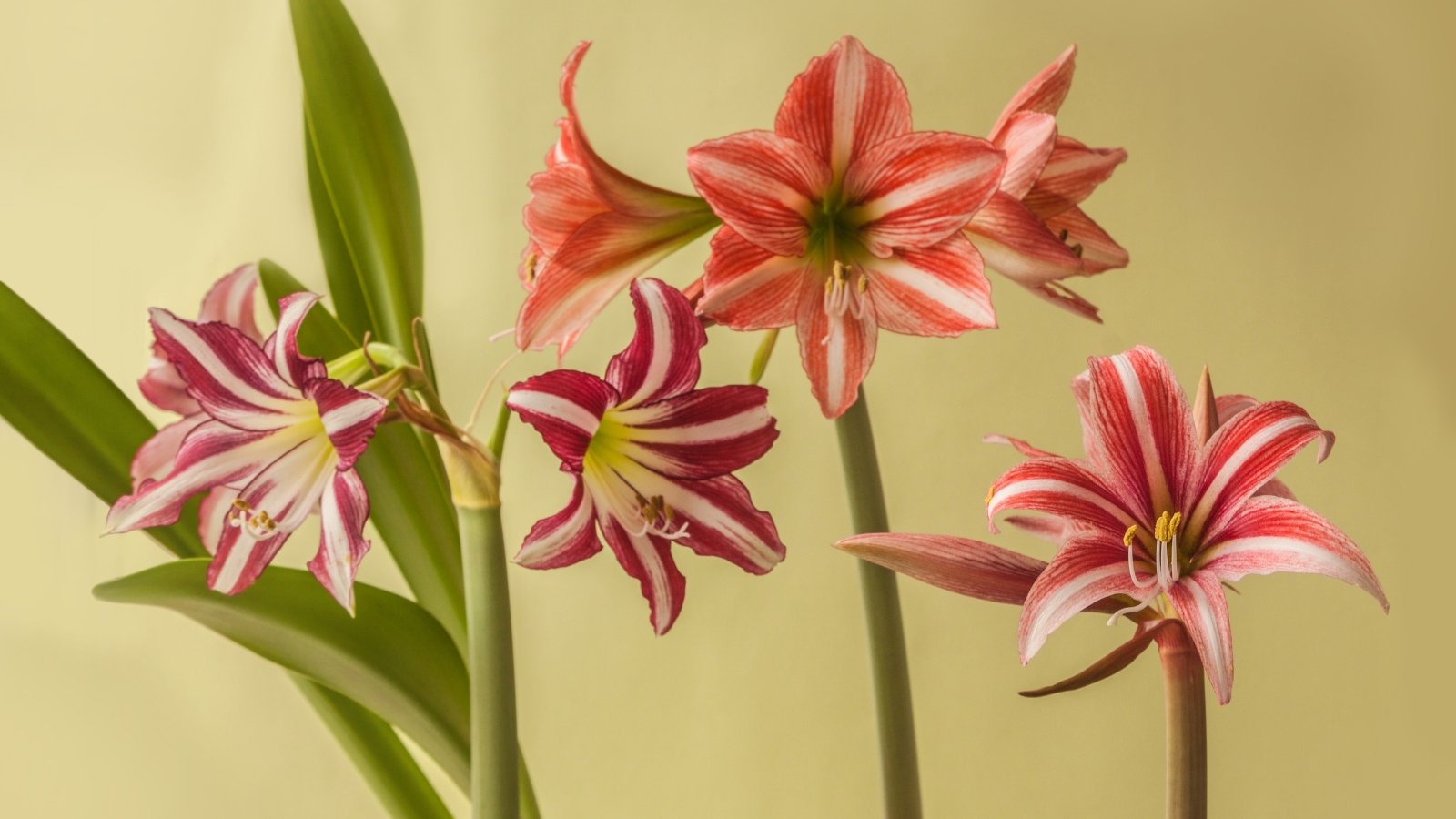
‘Sweet Lilian’ is a more delicate variety with star-like blooms. The petals are white and heavily streaked with rose red. In the center, a green throat adds dimension and depth to these sweet flowers. The stems are the same cool green as the throats, making these extra Christmassy.
‘Red Pearl’
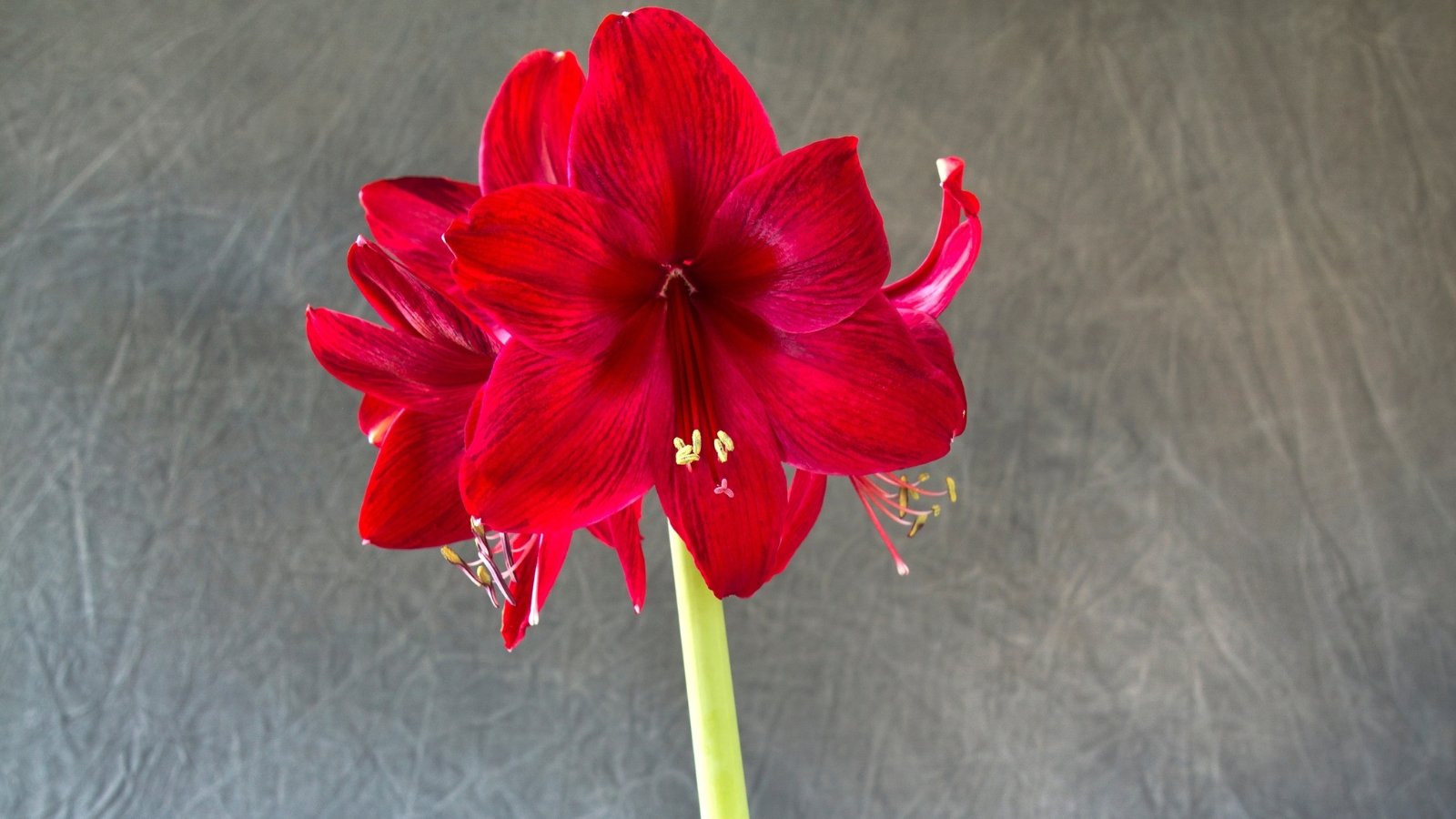
‘Red Pearl’s’ claim to fame is being one of the darkest amaryllis’ around. The large, broad, pointed petals are deep red with even darker streaking from the throat. If you’re looking for big, bold color and a major statement maker, this one is perfection.
‘Samba’
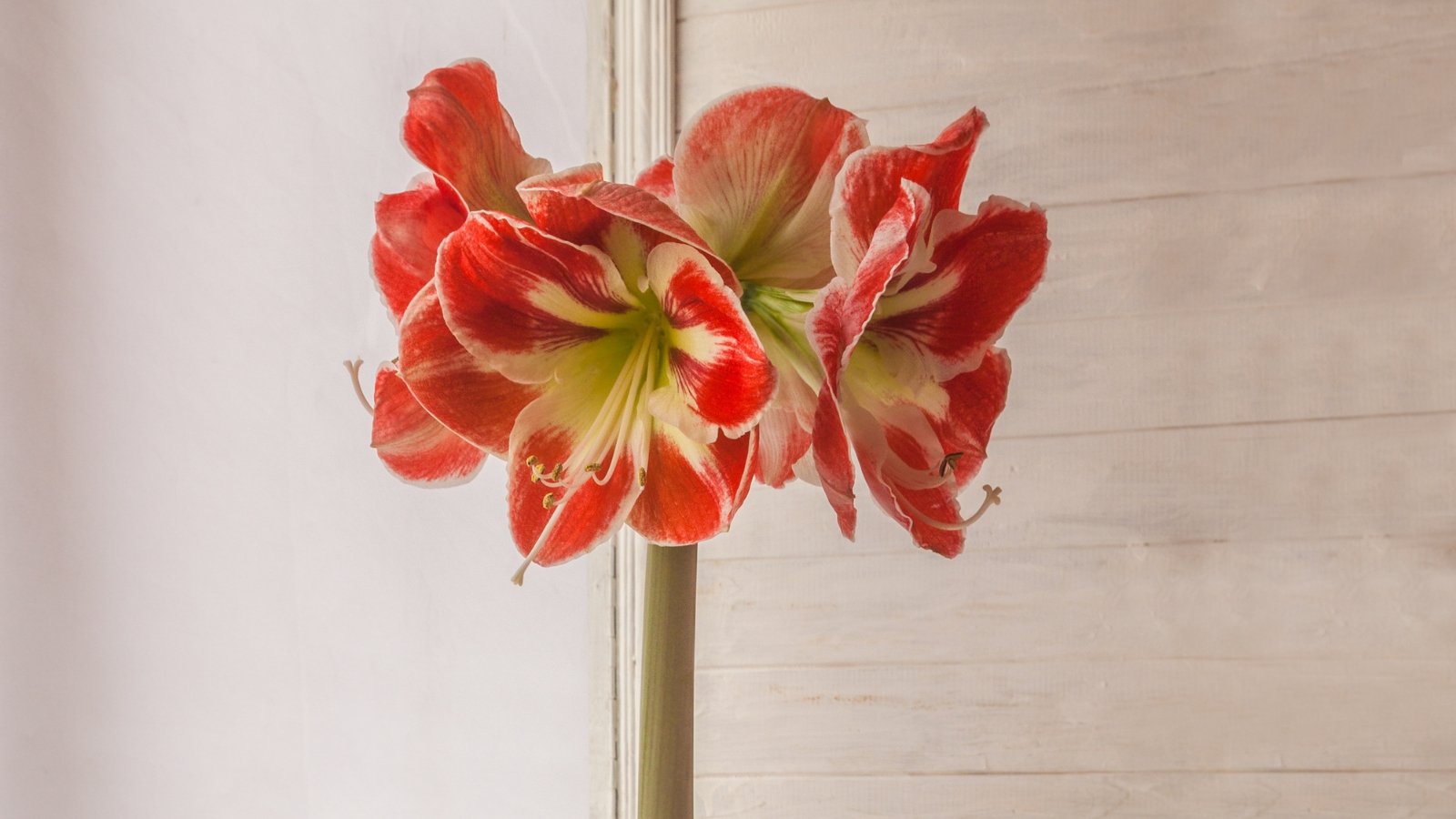
‘Samba’ is an extra large variety with fancy, tropical flowers. These blooms are bright red with a white edge and throat that radiates onto the petals. They can grow up to two feet tall with seven-inch flowers. These are truly spectacular.
‘Picotee’
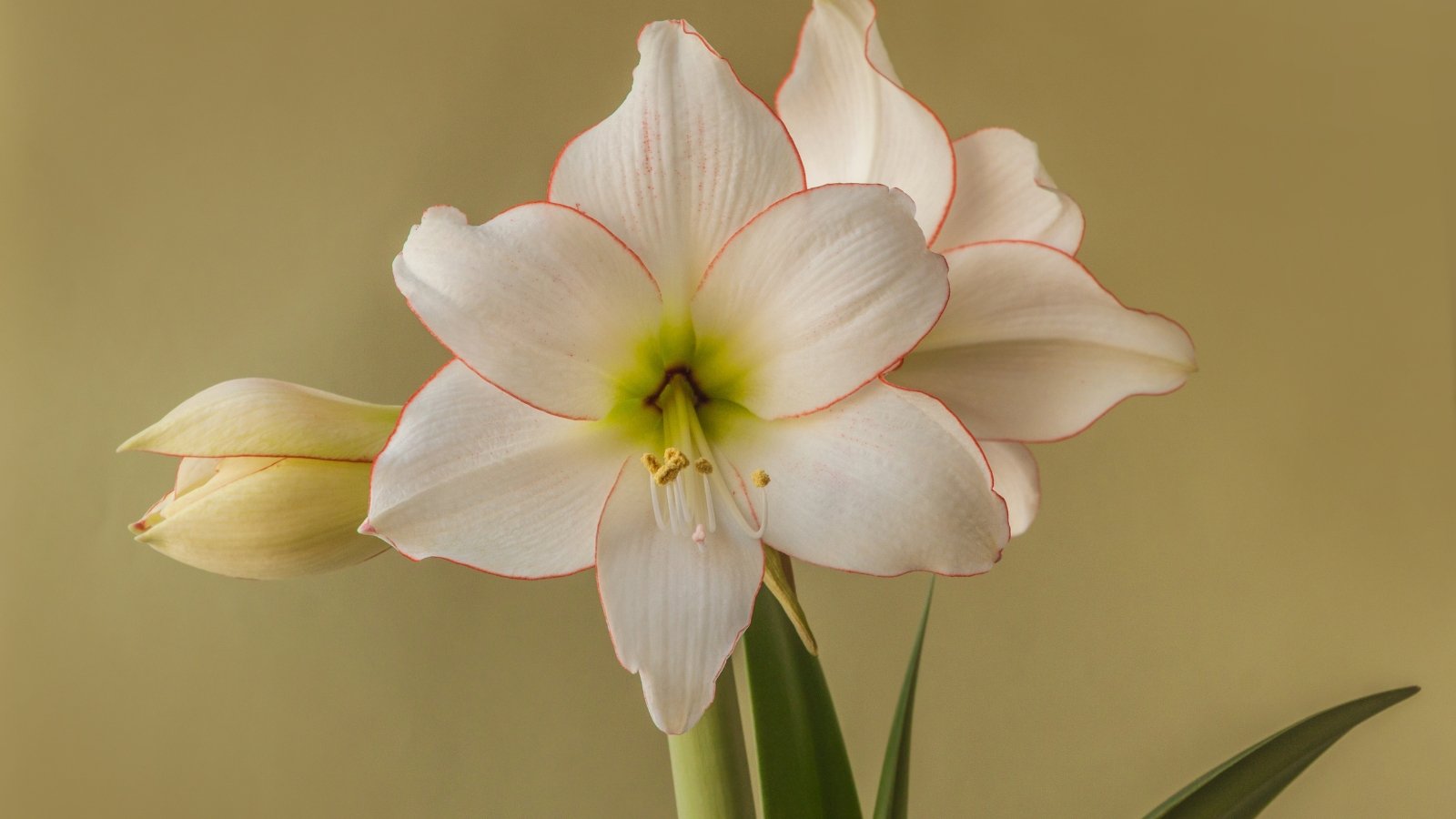
This classy cultivar brings drama to your dinner table. Make ‘Picotee’ your holiday centerpiece, and your guests won’t forget it. The large blooms are snow-white with the finest red edge. They have ten large, overlapping petals and an apple-green throat. This is a striking and unusual variety.
Alternative: Dig Your Bulbs
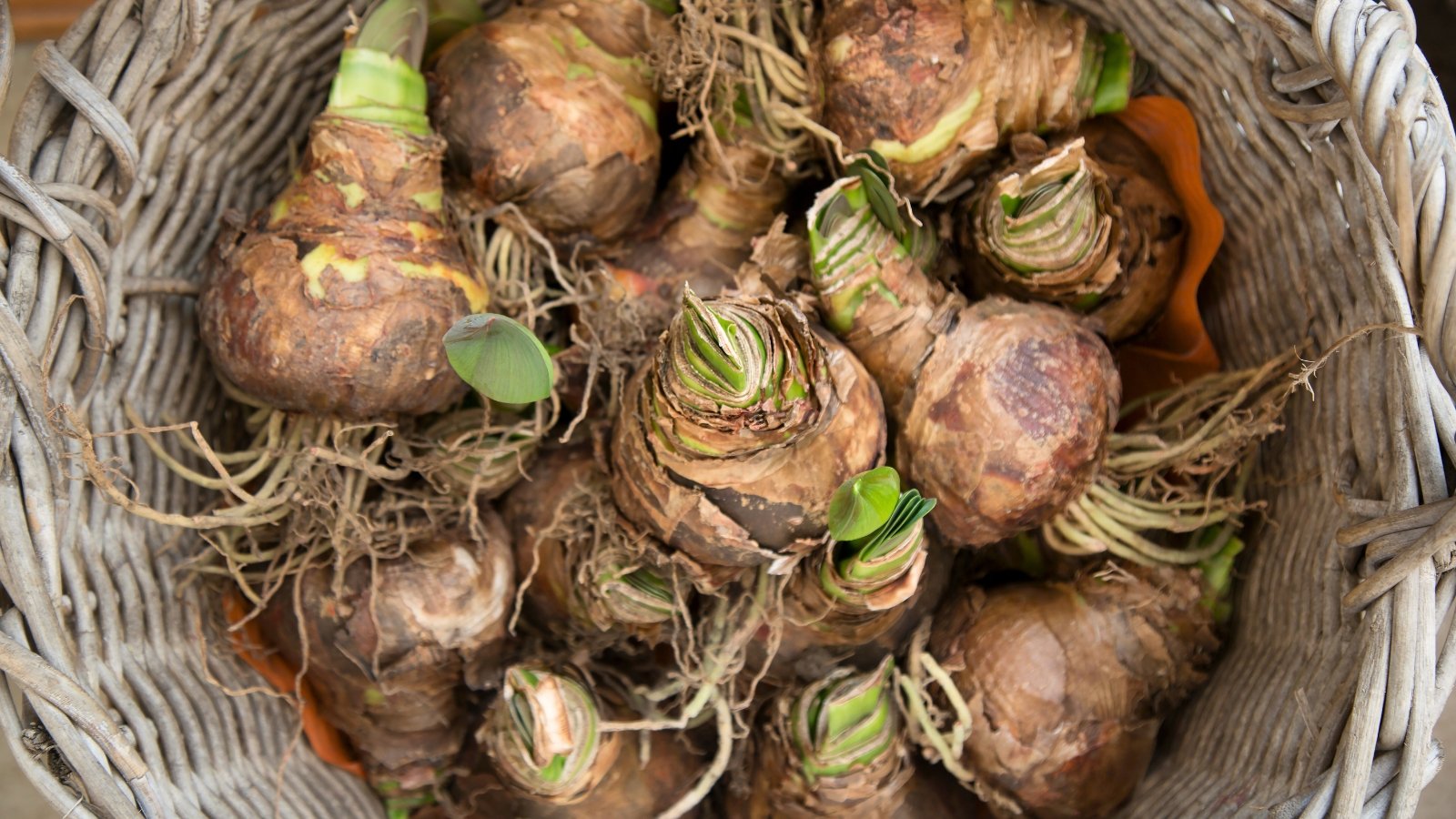
This step applies to those living in warm climates who want to dig up their amaryllis bulbs and bring them indoors to force blooms during the winter. I will note that this means they will not bloom at their regular time that year. However, you’ll get to enjoy those wonderful flower clusters during the winter rather than waiting for spring.
In late summer to early fall, dig up your bulb and cut the foliage off. Clean it off and allow it to dry before storing it. Store it in a cool, dark place for about two months. This signals that it is time to enter dormancy, which is necessary for blooming.
After about two months, your bulb should be ready to plant again, this time indoors. Take it out of dormancy and treat it as you would a newly purchased bulb.
Choose the Right Time
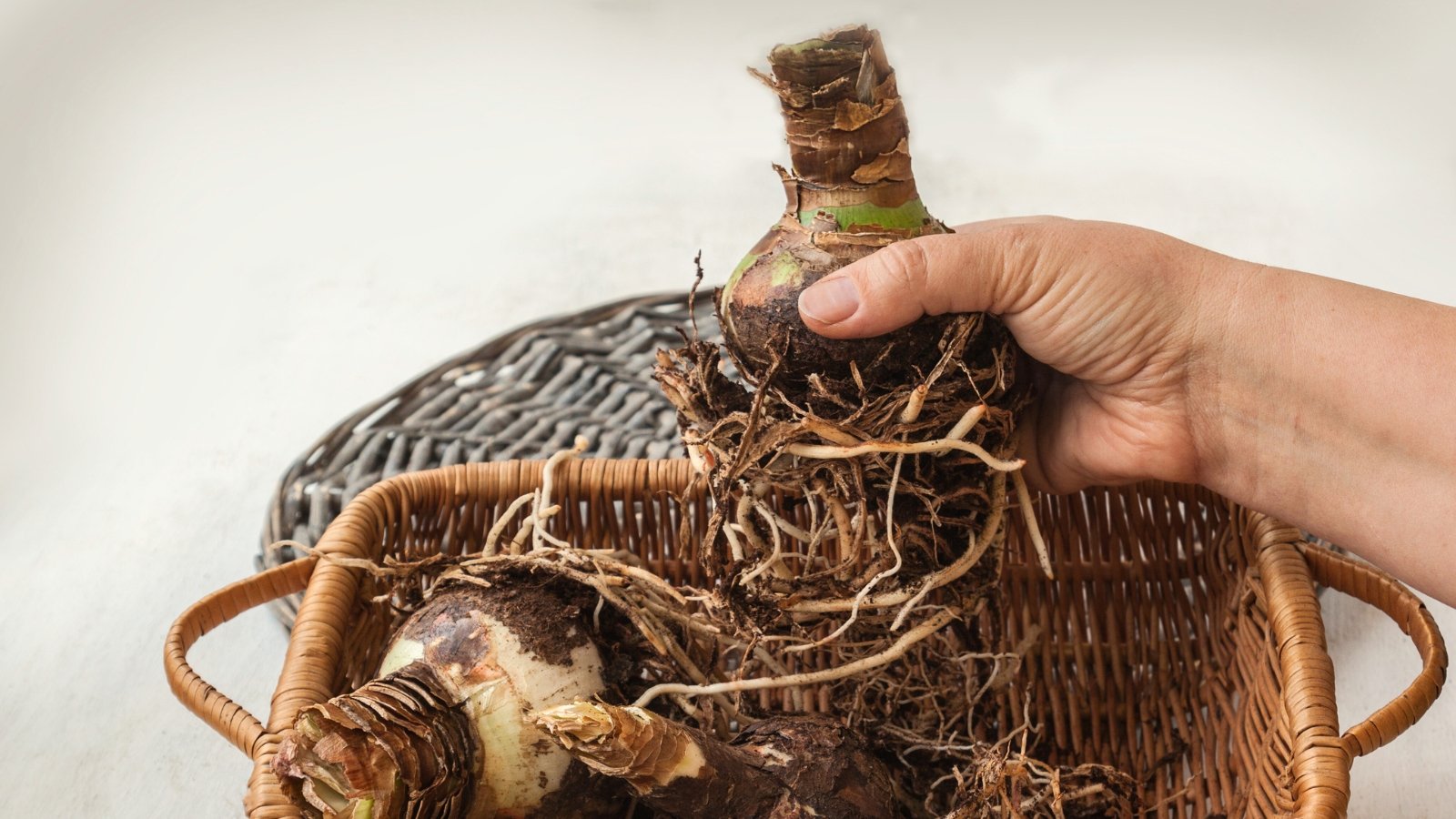
Timing is important if you want to force amaryllis blooms around at a specific time for an indoor holiday display. The time it takes for them to grow and bloom is influenced by one important factor: the temperature inside your home.
In general, the time range for forcing these bulbs is from six to 12 weeks. If your home is quite warm, expect it to take between six and eight weeks. For colder homes, it can take up to 12 weeks, so you’ll want to start earlier.
We can’t always control the weather, but we do have a decent amount of control over the home environment. If you want to see those flowers near the end of December, get started in late October or early November. That is, unless you keep it cold in your house, in which case, shoot for early October.
Gather Supplies
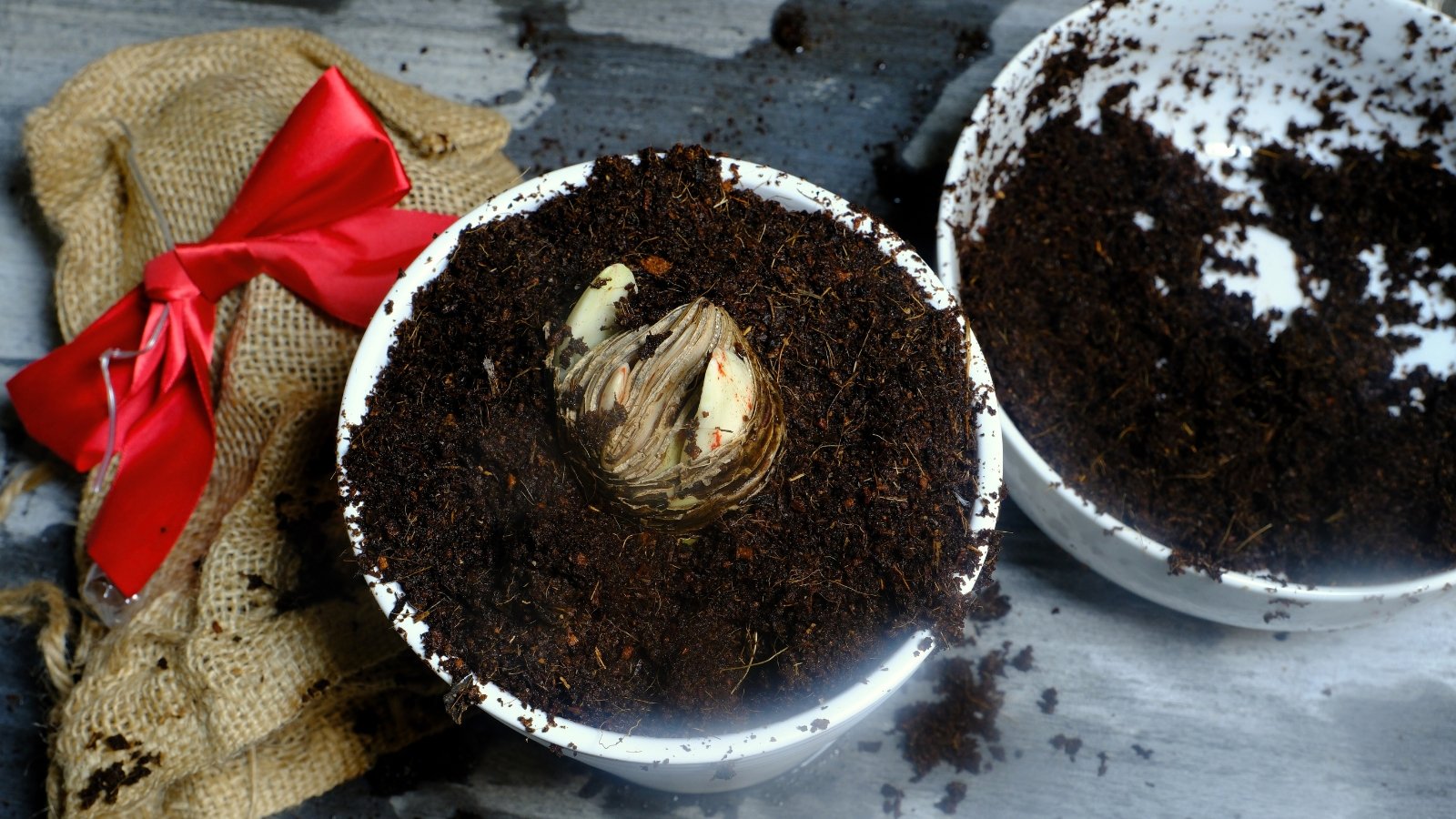
You have a couple of options regarding the container and medium you force your bulbs in. The first is using water exclusively, in which case you’ll need a watertight container. You will also need some stones or gravel unless you use a jar with a narrow center that will hold the bulb above the water. If you choose to go with potting mix, make sure to choose a container with proper drainage, as these bulbs don’t like soggy soil.
Pot Your Bulb
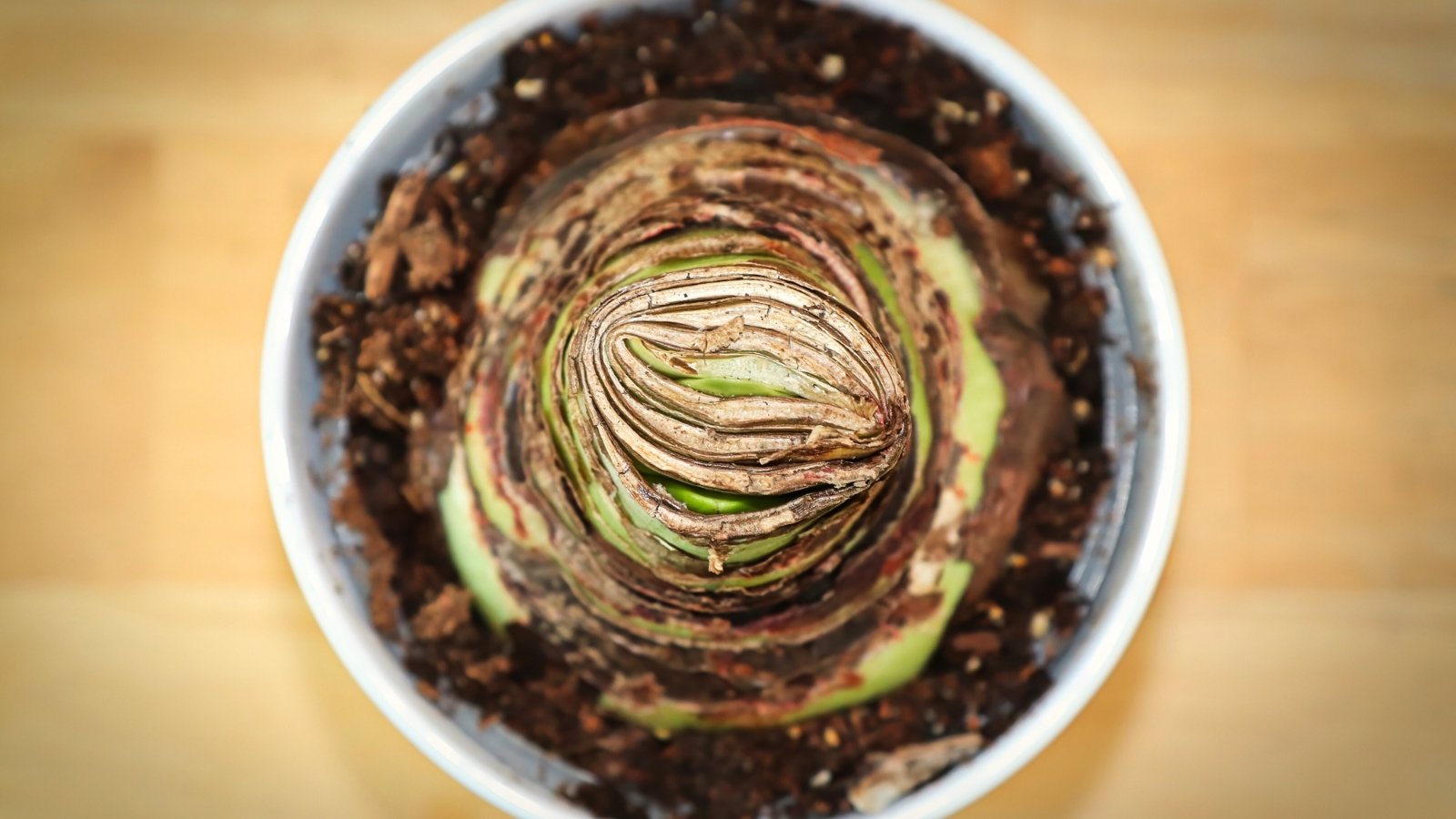
If you’ve opted for a glass and water set-up, you have two options. You can use a glass vase made specifically for forcing bulbs. These have a bulbous bottom that you fill with water, then a narrow neck that flares out again to accommodate the bulb. They are great because they prevent the bulb from sitting in the water and rotting.
If you’ve chosen a larger or other shape of container, you’ll need some sort of substrate on the bottom. Pebbles, aquarium rocks, or glass marbles all work well. Fill the bottom of the container with your substrate, fill it with water to just below the level of the stones, and then set your bulb on top so that it doesn’t quite touch the water.
The water’s evaporation and warmer temperature will encourage root growth. The roots will grow into the water, and the rest of the bulb will be safe above the surface.
If you are using a potting mix, make sure to choose one that has good drainage so that it doesn’t stay wet and rot the bulb. Fill the container with soil about halfway. Then, set the bulb on top of the soil and fill in around it, leaving the top third of it uncovered. Water lightly, moistening the top two inches of soil.
Keep It Warm
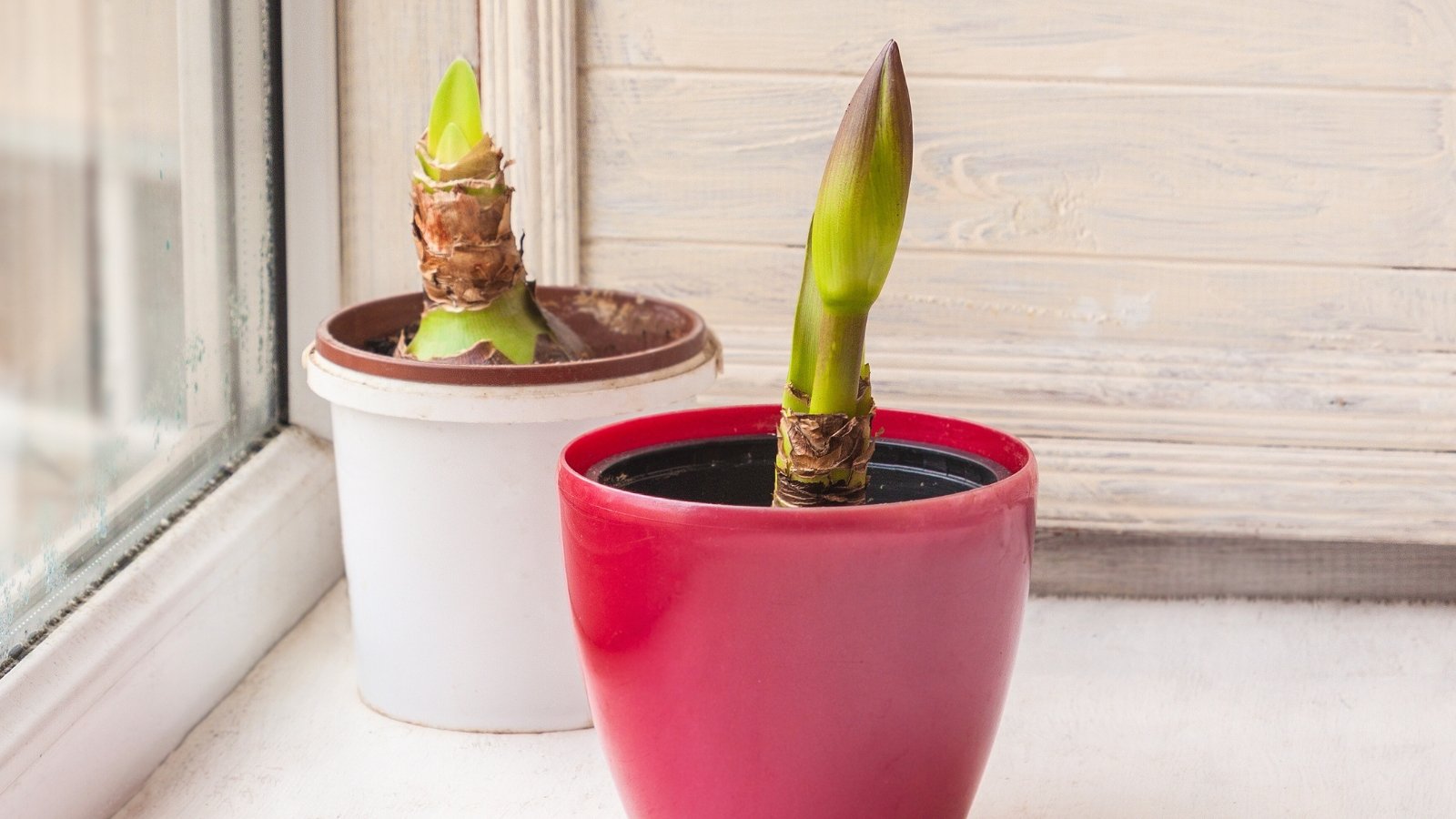
Temperature is the key to succesfully force amaryllis blooms to appear. They need some warmth, as they would get in late spring in their natural environment. Because they’re indoors, set your plant in a warm spot that receives plenty of bright but indirect sunlight. A temperature of 70°F (21°C) is ideal. A slightly warmer temperature will produce faster growth, and a cooler temperature will cause slower growth. Ensure you’re going no lower than 60°F (16°C).
Water and Fertilize
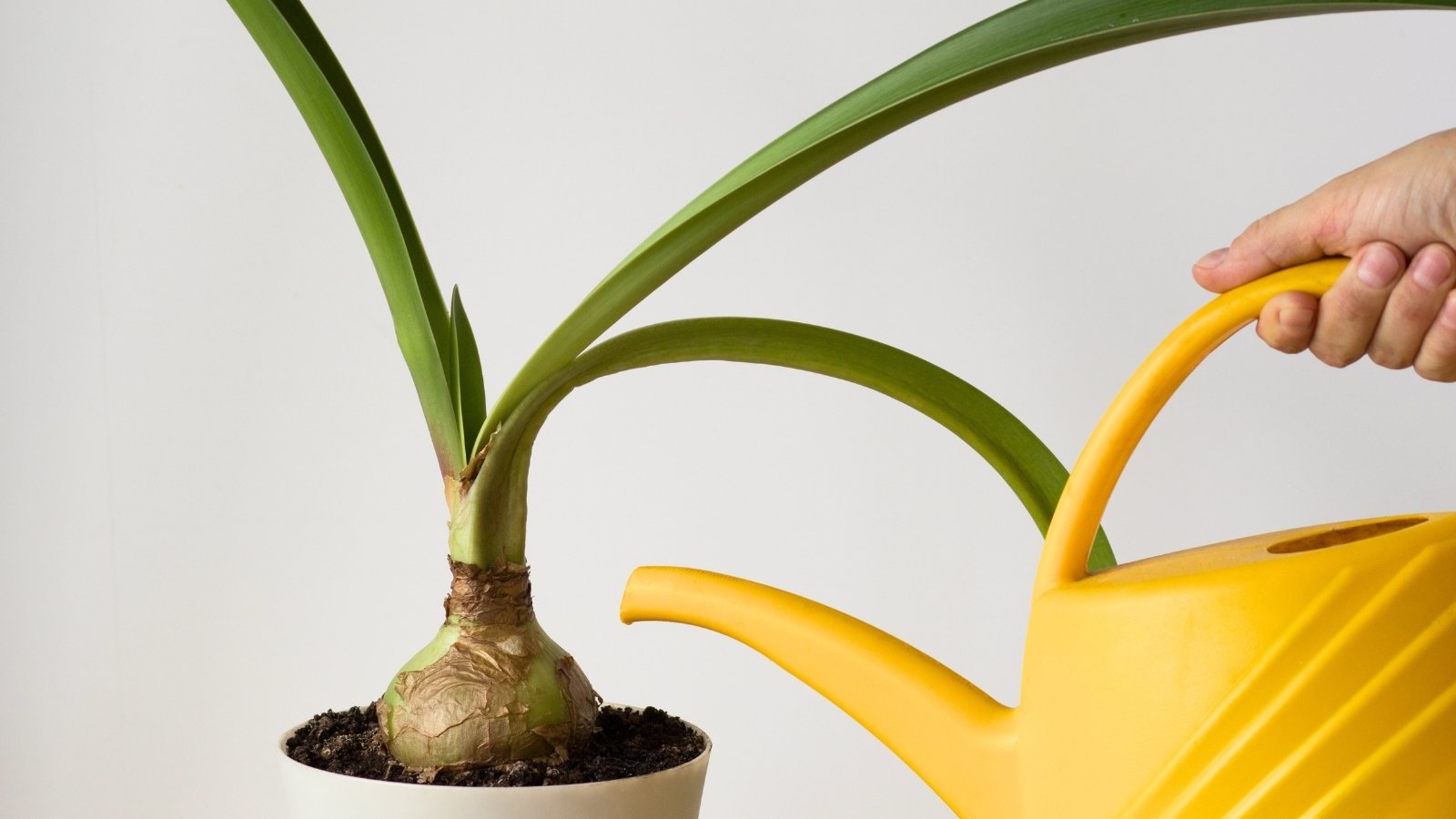
While you’re waiting for things to row, you should water sparingly. Only water when the top two inches of soil are dry, and don’t overdo it. A rotten bulb will not grow, or if it does, it will not bloom well.
Each time you water, give your plant some fertilizer. Use a water-soluble fertilizer with a high phosphorus content. A ratio of 10-20-15 is just right. Dilute your fertilizer to half of the recommended strength.
Turn it Around
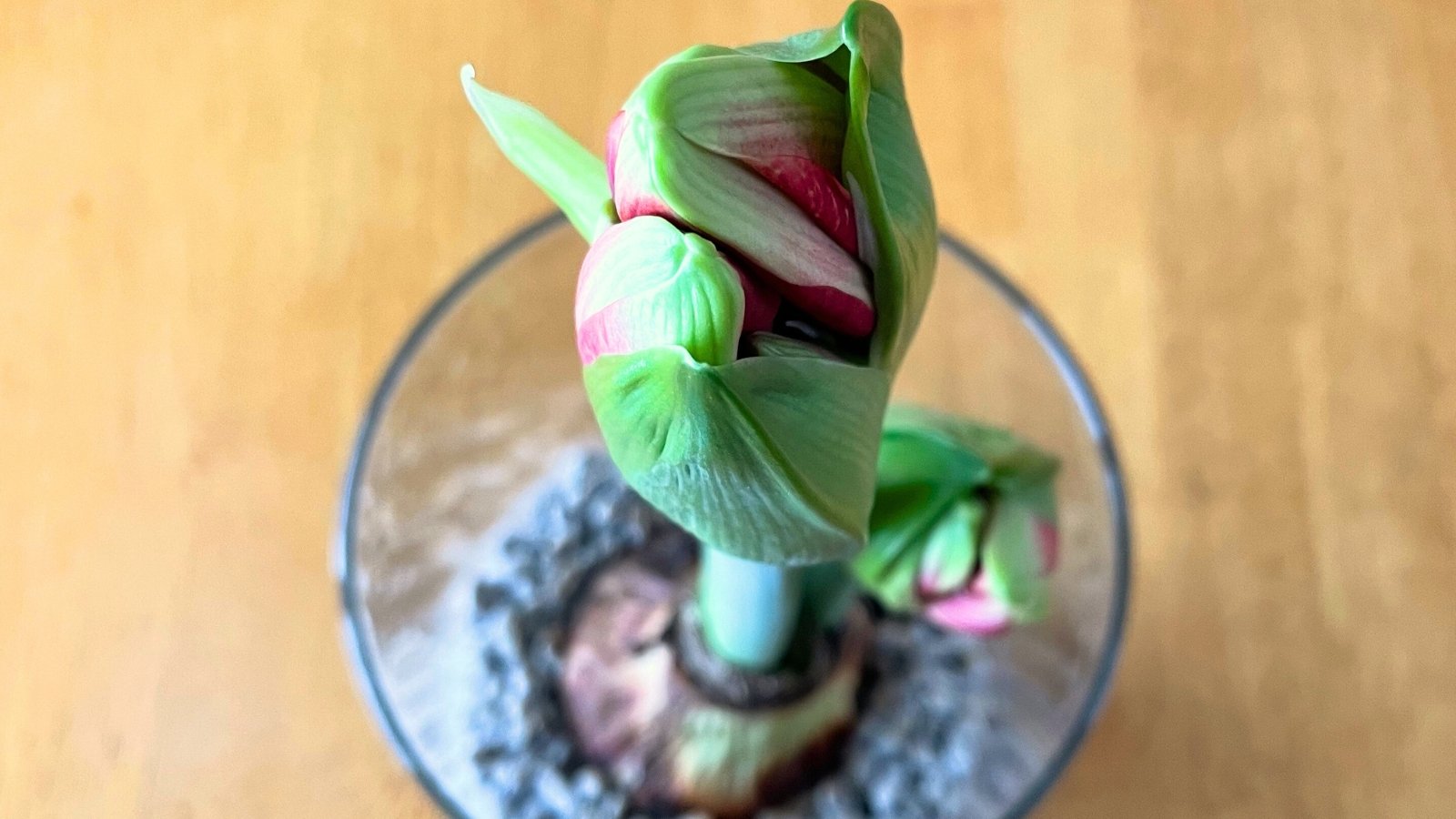
You may have noticed that your houseplants tend to grow toward the sun. If you leave them in one place too long, their growth will be heavier on the side that faces the sun.
To avoid this occurrence and avoid curving stems, rotate your amaryllis regularly.
Turn the container a quarter of a turn every three to four days to keep those stems growing upright. Sometimes, there will be more than one stem, and this is important to keep them from leaning on one another.
Stake Your Amaryllis
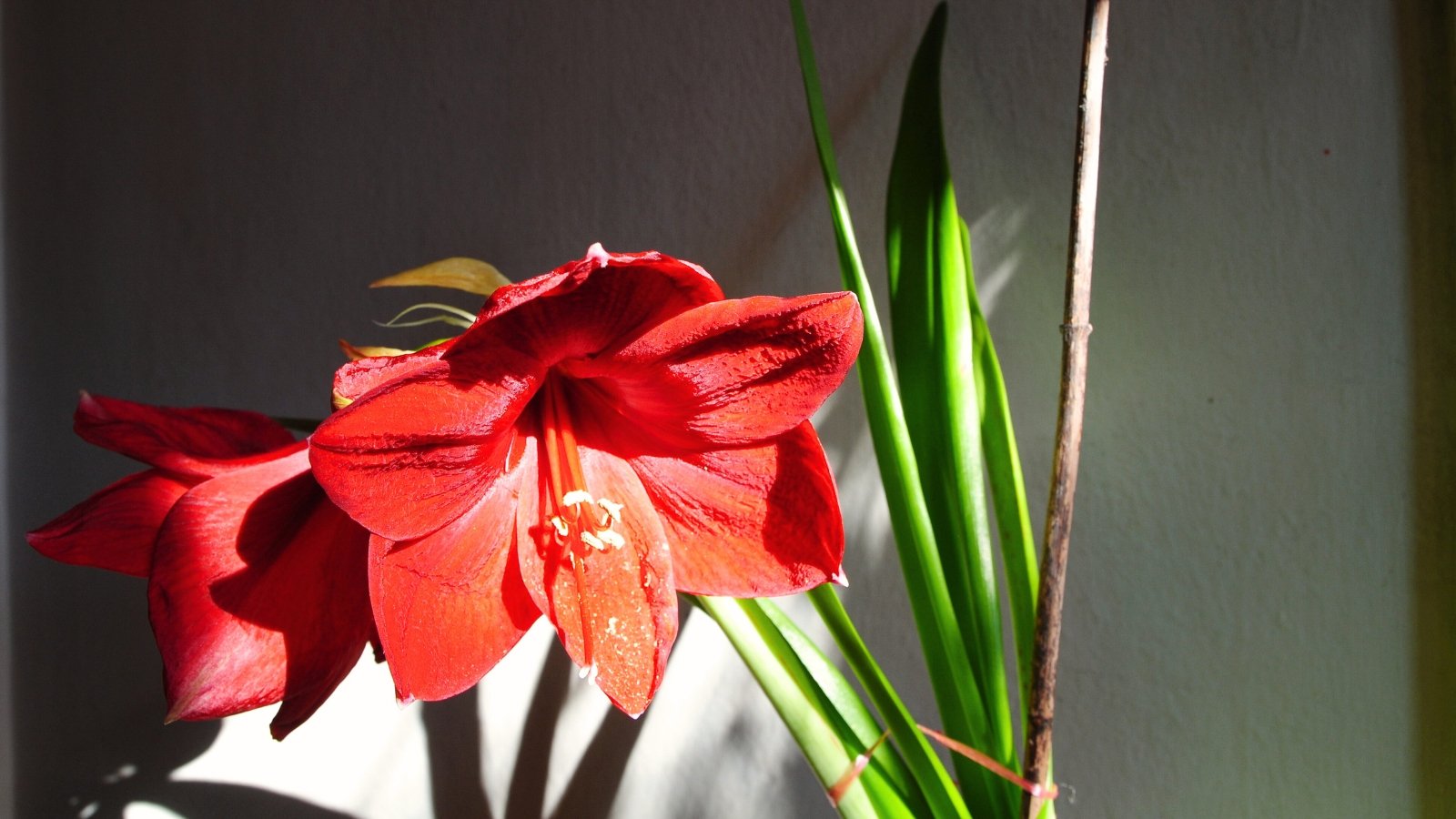
Amaryllis usually have strong stems that don’t bend under pressure. However, those flowers can be quite heavy. If you notice a stem starting to lean, give it some support. A thin bamboo stake or other material will work well. Tie the stem gently to the support, being careful not to damage it. The stems are hollow.
Bring Down the Light
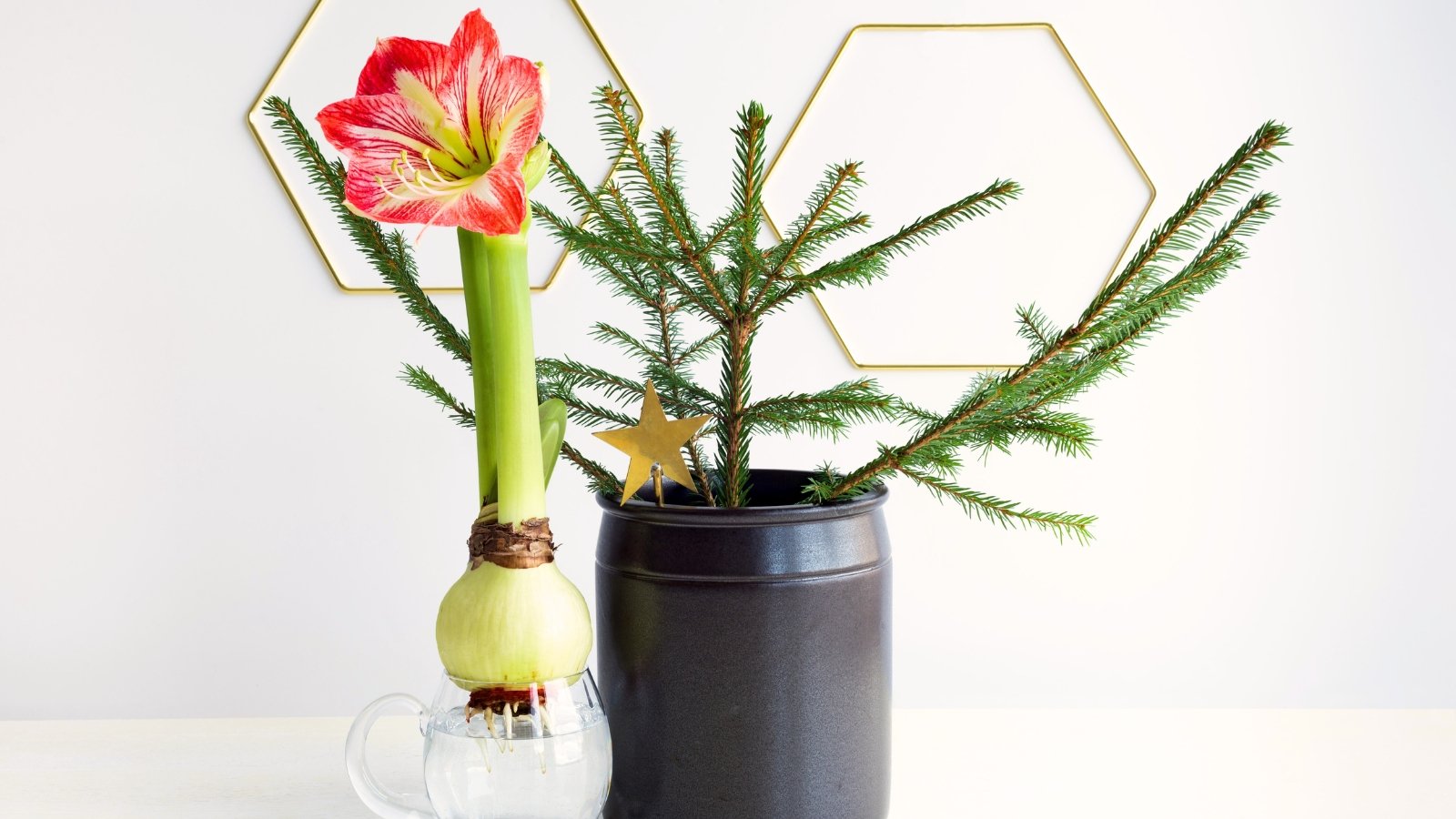
Once the buds form and start to plump up, it’s time to move your plant to a more shaded or low-light position. While bright light is great for speeding up the flowering process, it’s also good for ending it quickly. Once the flowers begin to open, move your amaryllis away from the window to make the blooms last longer.

